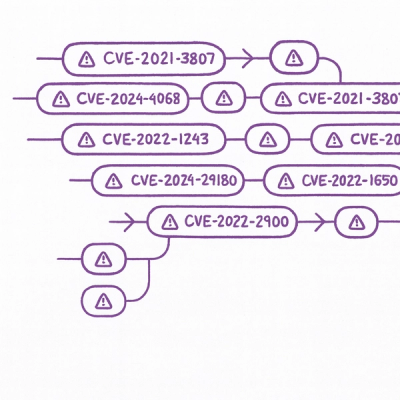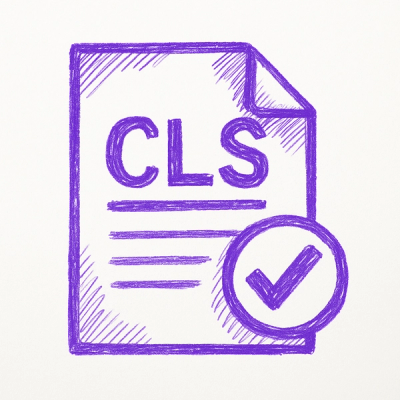
Security News
Astral Launches pyx: A Python-Native Package Registry
Astral unveils pyx, a Python-native package registry in beta, designed to speed installs, enhance security, and integrate deeply with uv.
A Python package for creating and rendering SVG charts, including line charts, axes, legends, and text labels. This package supports both simple and complex chart structures and is highly customisable for various types of visualisations.
This project is designed to produce charts that are easily embedded into python web applications (or other web applications) with minimum fuss.
Many charting libraries for the web rely on JavaScript-driven client-side rendering, often requiring an intermediate canvas before producing a polished visual. On the other hand, popular python based charting libraries focus on image-based rendering. Such images are rigid and intractable once embedded into web applications and detailed customisation is impossible. Although some libraries do generate resolution independent output it is very difficult to customise.
This package takes a different approach: it generates clean, standalone SVG charts entirely within Python that can be immediately embedded into a web application. By leveraging SVG’s inherent scalability and styling flexibility, it eliminates the need for JavaScript dependencies, client-side rendering, or post-processing steps. The result is a lightweight, backend-friendly solution for producing high-quality, resolution-independent charts without sacrificing control or maintainability.
Every chart element is designed to be easily modified, giving developers precise control over appearance and structure. As such, all of the lower level elements are accessible via properties of the charts.
.. code:: bash
pip install pysvgchart
Alternatively, you can clone this repository and install it locally:
.. code:: bash
git clone https://github.com/arowley-ai/py-svg-chart.git cd py-svg-chart pip install .
Usage depends on which chart you had in mind but each one follows similar principles.
Simple donut chart ^^^^^^^^^^^^^^^^^^
A simple donut chart:
.. code:: python
import pysvgchart as psc
values = [11.3, 20, 30, 40]
donut_chart = psc.DonutChart(values)
svg_string = donut_chart.render()
.. image:: https://raw.githubusercontent.com/arowley-ai/py-svg-chart/refs/heads/main/showcase/donut.svg :alt: Simple donut chart example :width: 200px
Donut chart hovers ^^^^^^^^^^^^^^^^^^ The donut is nice but a little boring. To make it a bit more interesting, lets add interactive hover effects. These effects can be added to any base elements but I thought you'd mostly use it for data labels.
.. code:: python
def hover_modifier(position, name, value, chart_total):
text_styles = {'alignment-baseline': 'middle', 'text-anchor': 'middle'}
return [
psc.Text(x=position.x, y=position.y-10, content=name, styles=text_styles),
psc.Text(x=position.x, y=position.y+10, content="{:.2%}".format(value/chart_total), styles=text_styles)
]
values = [11.3, 20, 30, 40]
names = ['Apples', 'Bananas', 'Cherries', 'Durians']
donut_chart = psc.DonutChart(values, names)
donut_chart.add_hover_modifier(hover_modifier)
donut_chart.render_with_all_styles()
Here <https://raw.githubusercontent.com/arowley-ai/py-svg-chart/refs/heads/main/showcase/donut_hover.svg>_ is the output of this code.
In order to get the hover modifiers to display successfully you will need to either render the svg with styles
or include the relevant css separately
Simple line chart ^^^^^^^^^^^^^^^^^
Create a simple line chart:
.. code:: python
import pysvgchart as psc
x_values = list(range(100))
y_values = [4000]
for i in range(99):
y_values.append(y_values[-1] + 100 * random.randint(0, 1))
line_chart = psc.SimpleLineChart(
x_values=x_values,
y_values=[y_values, [1000 + y for y in y_values]],
y_names=['predicted', 'actual'],
x_max_ticks=20,
y_zero=True,
)
line_chart.add_grids(minor_y_ticks=4, minor_x_ticks=4)
line_chart.add_legend()
svg_string = line_chart.render()
.. image:: https://raw.githubusercontent.com/arowley-ai/py-svg-chart/refs/heads/main/showcase/line.svg :alt: Simple line chart example
More stylised example ^^^^^^^^^^^^^^^^^^^^^
Here's a heavily customised line chart example
.. code:: python
import pysvgchart as psc
def y_labels(num):
num = float('{:.3g}'.format(num))
magnitude = 0
while abs(num) >= 1000:
magnitude += 1
num /= 1000.0
rtn = '{}{}'.format('{:f}'.format(num).rstrip('0').rstrip('.'), ['', 'K', 'M', 'B', 'T'][magnitude])
return rtn.replace('.00', '').replace('.0', '')
def x_labels(date):
return date.strftime('%b')
dates = [dt.date.today() - dt.timedelta(days=i) for i in range(500) if (dt.date.today() + dt.timedelta(days=i)).weekday() == 0][::-1]
actual = [(1 + math.sin(d.timetuple().tm_yday / 183 * math.pi)) * 50000 + 1000 * i + random.randint(-10000, 10000) for i, d in enumerate(dates)]
expected = [a + random.randint(-10000, 10000) for a in actual]
line_chart = psc.SimpleLineChart(x_values=dates, y_values=[actual, expected], y_names=['Actual sales', 'Predicted sales'], x_max_ticks=30, x_label_format=x_labels, y_label_format=y_labels, width=1200)
line_chart.series['Actual sales'].styles = {'stroke': "#DB7D33", 'stroke-width': '3'}
line_chart.series['Predicted sales'].styles = {'stroke': '#2D2D2D', 'stroke-width': '3', 'stroke-dasharray': '4,4'}
line_chart.add_legend(x=700, element_x=200, line_length=35, line_text_gap=20)
line_chart.add_y_grid(minor_ticks=0, major_grid_style={'stroke': '#E9E9DE'})
line_chart.x_axis.tick_lines, line_chart.y_axis.tick_lines = [], []
line_chart.x_axis.axis_line = None
line_chart.y_axis.axis_line.styles['stroke'] = '#E9E9DE'
line_end = line_chart.legend.lines[0].end
act_styles = {'fill': '#FFFFFF', 'stroke': '#DB7D33', 'stroke-width': '3'}
line_chart.add_custom_element(psc.Circle(x=line_end.x, y=line_end.y, radius=4, styles=act_styles))
line_end = line_chart.legend.lines[1].end
pred_styles = {'fill': '#2D2D2D', 'stroke': '#2D2D2D', 'stroke-width': '3'}
line_chart.add_custom_element(psc.Circle(x=line_end.x, y=line_end.y, radius=4, styles=pred_styles))
for limit, tick in zip(line_chart.x_axis.scale.ticks, line_chart.x_axis.tick_texts):
if tick.content == 'Jan':
line_chart.add_custom_element(psc.Text(x=tick.position.x, y=tick.position.y + 15, content=str(limit.year), styles=tick.styles))
def hover_modifier(position, x_value, y_value, series_name, styles):
text_styles = {'alignment-baseline': 'middle', 'text-anchor': 'middle'}
params = {'styles': text_styles, 'classes': ['psc-hover-data']}
return [
psc.Circle(x=position.x, y=position.y, radius=3, classes=['psc-hover-data'], styles=styles),
psc.Text(x=position.x, y=position.y - 10, content=str(x_value), **params),
psc.Text(x=position.x, y=position.y - 30, content="{:,.0f}".format(y_value), **params),
psc.Text(x=position.x, y=position.y - 50, content=series_name, **params)
]
line_chart.add_hover_modifier(hover_modifier, radius=5)
line_chart.render_with_all_styles()
.. image:: https://raw.githubusercontent.com/arowley-ai/py-svg-chart/refs/heads/main/showcase/detailed.svg :alt: Complex line chart example
View <https://raw.githubusercontent.com/arowley-ai/py-svg-chart/refs/heads/main/showcase/detailed.svg>_ with hover effects
We welcome contributions! If you’d like to contribute to the project, please follow these steps:
All of the charts in the showcase folder are generated by pytest. If you create something neat that you'd like to share then see if it can be added to the test suite and it will be generated alongside other showcase examples.
This project is licensed under the MIT License - see the LICENSE file for details.
FAQs
Creates svg based charts in python
We found that pysvgchart demonstrated a healthy version release cadence and project activity because the last version was released less than a year ago. It has 1 open source maintainer collaborating on the project.
Did you know?

Socket for GitHub automatically highlights issues in each pull request and monitors the health of all your open source dependencies. Discover the contents of your packages and block harmful activity before you install or update your dependencies.

Security News
Astral unveils pyx, a Python-native package registry in beta, designed to speed installs, enhance security, and integrate deeply with uv.

Security News
The Latio podcast explores how static and runtime reachability help teams prioritize exploitable vulnerabilities and streamline AppSec workflows.

Security News
The latest Opengrep releases add Apex scanning, precision rule tuning, and performance gains for open source static code analysis.